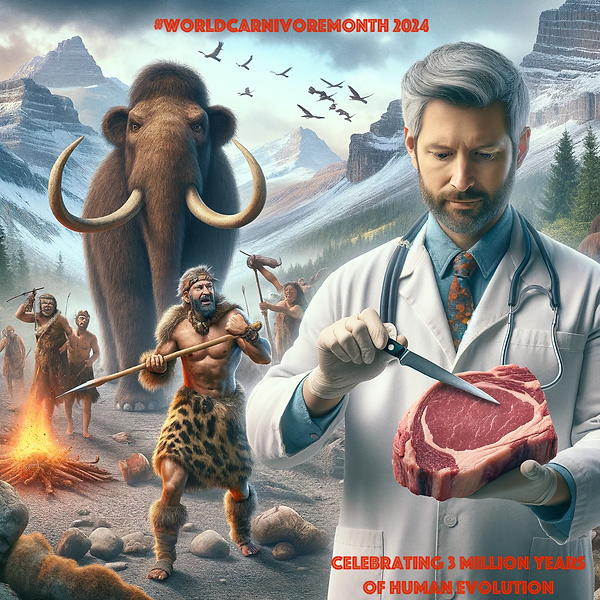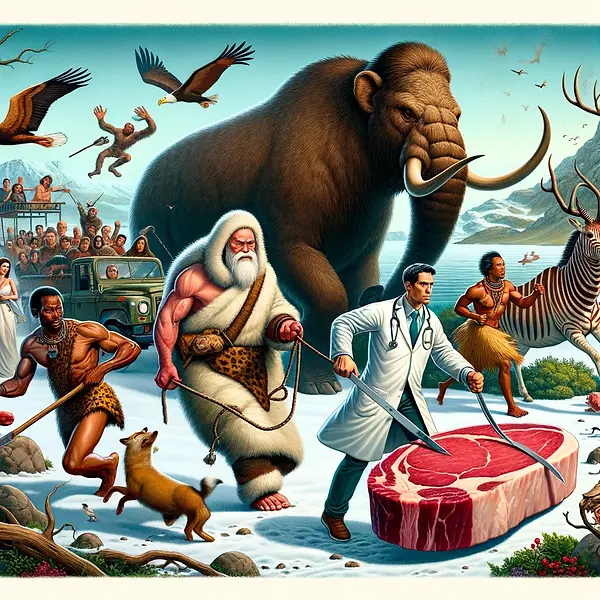


Title:
Large brains evolved from animal fat and cholesterol in diet.
Abstract:
Animal Fat and Cholesterol May Have Helped Primitive Man Evolve a Large Brain
Details
Animal Fat and Cholesterol May Have Helped Primitive Man Evolve a Large Brain
ANIMAL FAT AND CHOLESTEROL MAY HAVE HELPED PRIMITIVE MAN EVOLVE A LARGE BRAIN FRANK D. MANN* In 1962, James V. Neel published a paper entitled "Diabetes Mellitus: A 'Thrifty' Genotype Rendered Detrimental by 'Progress'?" [I]; 20 years later, Neel revisited his theory, suggesting appropriate revisions because of significant additions to our knowledge of diabetes. During the intervening period, just as predicted by Neel's theory, a high frequency of diabetes was observed in populations emerging from the sparse diet of a primitive economy into the "progress" of a developed economy [2]. A prominent example of such a population, the Pima Indian tribe, has been and continues to be thoroughly studied [3]. Neel himself carried out a difficult field investigation of two South American tribes, showing that, in accordance with his theory, they were not diabetic while remaining in a primitive state [2]. An interest of many years' duration in Neel's original concept of a "thrifty" genotype led me to consider the possibility of an analogous case of a heritage now detrimental but originally advantageous. Overproduction of cholesterol, associated with consumption of animal fat but probably also with evolutionary changes in hepatic physiology, may have been helpful in meeting increased need for cholesterol in the evolution of the large brain of modern humans. I shall present an analysis of evidence for this hypothLeakey 's Reasoning: A Rich Meat Diet was Required for the Large Human Brain Leakey has been led by his reading of the anthropological language of fossil teeth and skulls to an unequivocal judgment of the importance of a meat diet [4]. Leakey does not attempt to evaluate the individual nutritional components of the meat diet, but considers a nutritionally richer diet to be necessary for the maintenance of the metabolically expensive large brain. The modern human brain surely is metabolically expensive, requiring 20 percent of the total resting oxygen consumption of the body, although it is only 2 percent of the body weight [5]. Chamberlain also considers the meat diet to be important and focuses on the essential fatty acids. While noting that these substances are present in vegetable sources, he suggests that the ample supply of the essential as well as other unsaturated fatty acids in meat could have conferred a survival advantage, a three-fold increase in the size of the human brain within 3 million years of evolution [6]. To obtain meat as the principal constituent of diet, primitive man would have had to compete with animals such as cats, which had already evolved formidable built-in equipment for killing: fangs and claws. Rapid evolution of a large brain was needed in this deadly competition. A diet rich in animal fat would have markedly increased the intake and hepatic synthesis of cholesterol. Would this have helped the development of the large brain? Evidence regarding the functions of cholesterol and the mechanisms of the supply and distribution is pertinent to this hypothesis. Cholesterol and Membranes Cholesterol has long been known to be an essential constituent of cell membranes and has been reported to comprise, on a molecular basis, half of the lipid content of the external cell membrane [7]. Myelinated nerve fibers make up a large part of the total mass of the brain. Their highly specialized covering membranes contain a large quantity of various lipids. Thus, early biochemists found brain to be a convenient source material from which to prepare cholesterol. Fielding has described the complex mechanism of transporters and receptors which have evolved to assure that all membranes have the appropriate individual content of free cholesterol [8]. Tight regulation of the very different amounts of free cholesterol in different membranes is necessary for various vital functions performed by structures located in the membranes . These include the ion pumps necessary for the life ofevery cell, and adenylate cyclase, which is required for the cell to respond to transmitter substances such as norepinephrine. Schroeder and colleagues have recently reviewed the evidence that highly asymmetric distributions of free cholesterol, within the membranes themselves...
Hypothesis:




